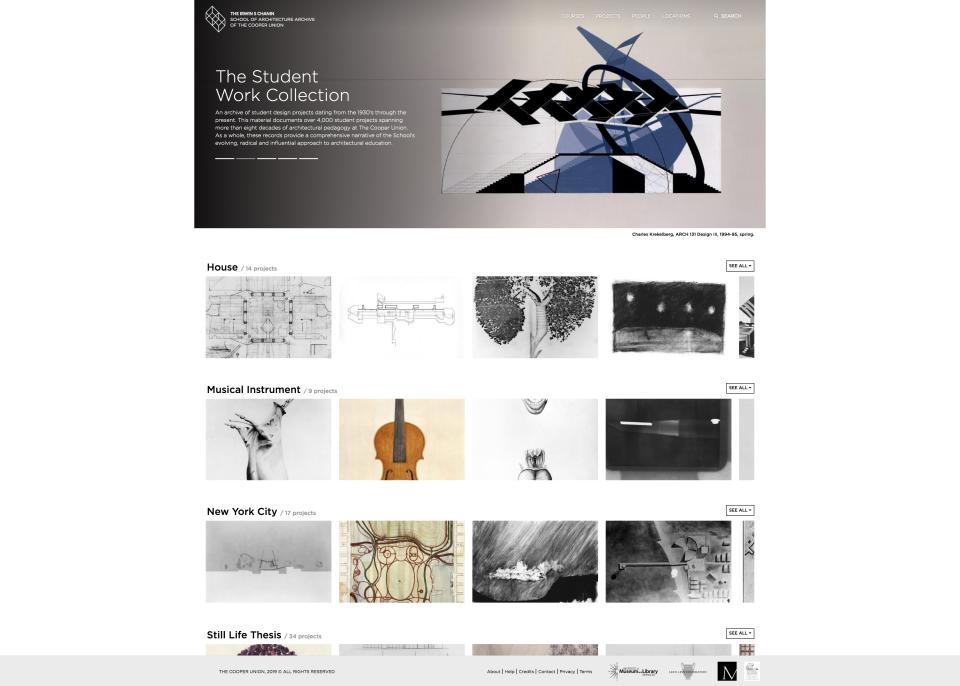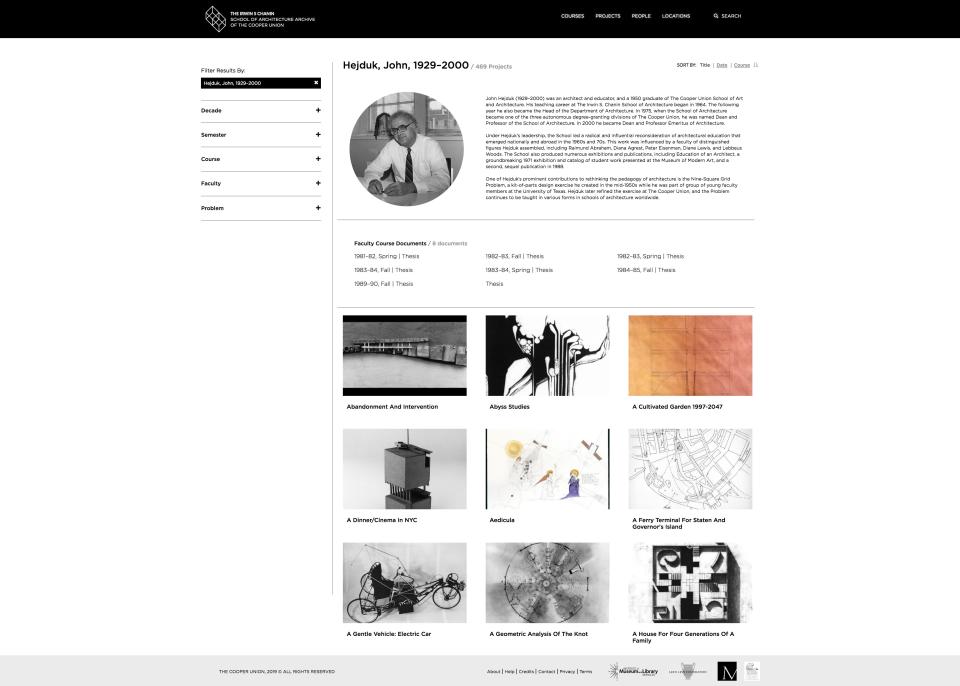A Look at the Student Projects of Star Architects Like Elizabeth Diller and Daniel Libeskind
Star architects like Elizabeth Diller and Daniel Libeskind are known the world over for their architectural excellence—many of their projects recognizable on name alone. But before they were household names with an impressive roster of clients, they got their start as young architecture students at The Cooper Union in New York City, designing models and dreaming up floor plans. Now, those student projects will be just a handful of many available to browse in the Student Work Collection, a free online database containing projects from more than 1,500 students while they attended The Cooper Union and its Irwin S. Chanin School of Architecture.
Debuting this week, the Student Work Collection features text, analog images, audio records, and born-digital media of 4,500 projects from the 1930s to today, a good portion of the work unpublished until now. But the database is also singular in that it presents a wide-ranging visual record of the school’s pedagogy. The school hopes the database will be a major resource for researchers, architecture students, and faculty.

“We have Liz Diller’s student work in the database, but we also have examples of work completed by her students when she was teaching here,” says director of the architecture archive Steven Hillyer, who graduated from The Cooper Union himself in 1990. “In addition to representing the school’s pedagogy, the database also comprises the seeds of the impact that pedagogy has had on how architects are educated at other schools.”
Also included in the Student Work Collection is the work of graduates such as Stan Allen, Peggy Deamer, Laurie Hawkinson, Kyna Leski, and Toshiko Mori, who have all gone on to educate at other architecture schools. Polish-American architect Daniel Libeskind, known for deconstructivist and postmodern work, graduated the architecture school in 1970, and the database presents his Urban Housing project and Collage thesis. “The collages are quite beautiful works that were completed on a remarkably intimate scale," says Hillyer. "The project, as Libeskind described, uses collage as a means of challenging the notion of architecture as a synthetic construct.”

Many of the projects in the database were completed under the leadership of John Hejduk, who graduated The Cooper Union in 1950. He was a professor there for 36 years, 25 of those as dean. Hejduk was known for his interdisciplinary approach and hired poets, writers, filmmakers, and artists to teach at the architecture school. Diller said Hejduk opened her eyes to the notion that architecture is so much more than structures. Just as an art school teaches artists that they are free from being defined, the architecture program at The Cooper Union did not confine students to creating buildings.
“Mr. Hejduk formalized a tradition early in his tenure at Cooper Union to disseminate the work of the school through exhibitions and publications. For me, this database is the ultimate way of doing that,” Hillyer says. “The way we think about making architecture is much different today, yet it can and should be informed by the work of the past.”
Established in 1859, the Cooper Union is known for its experimentation and free tuition, which lasted up until 2012 due to budget issues (though the school is now focused on bringing back free tuition). The 80 years of work captured in the database provide a more comprehensive understanding of American culture, history, and The Cooper Union’s experimental, influential approach to an architecture education.
Originally Appeared on Architectural Digest

